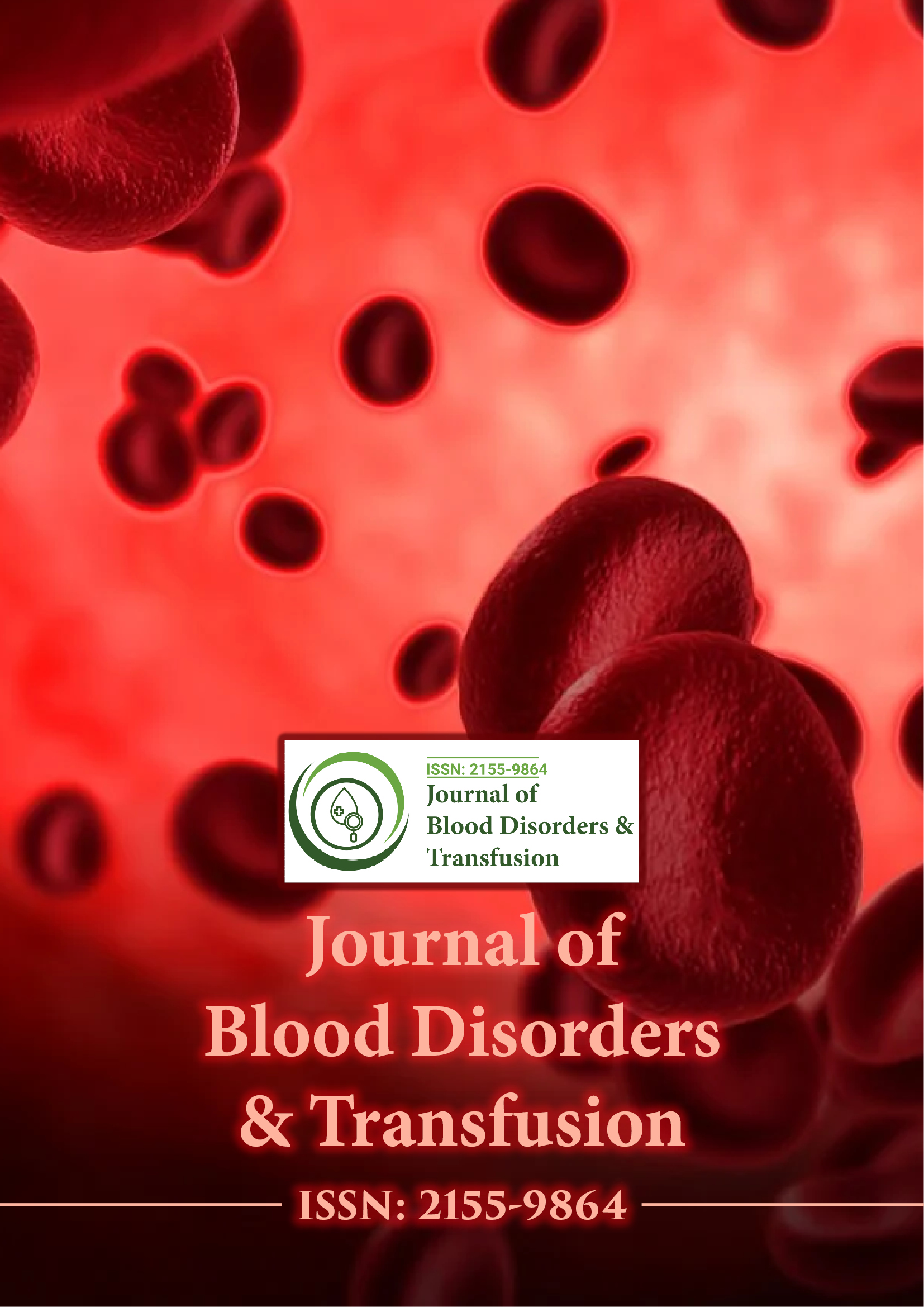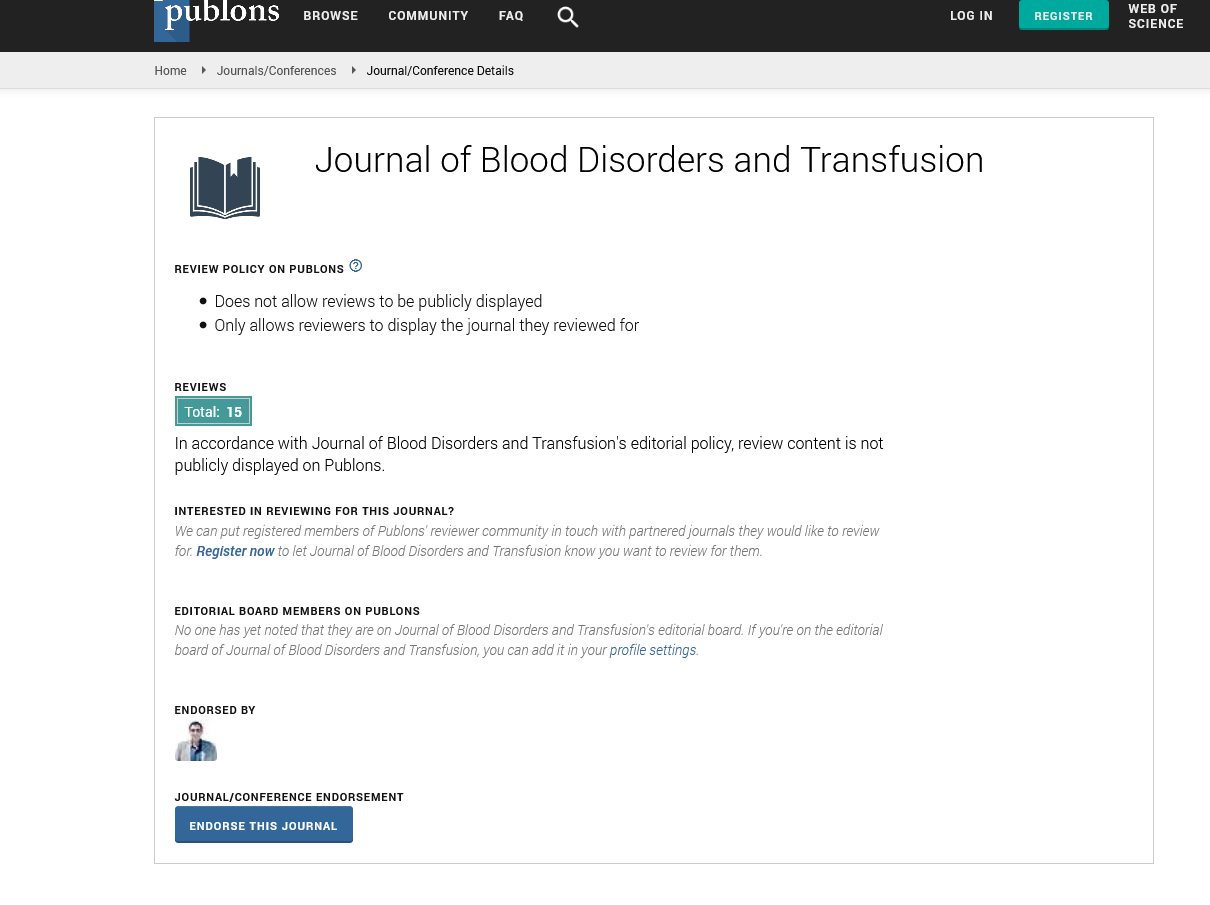Indexed In
- Open J Gate
- Genamics JournalSeek
- JournalTOCs
- Ulrich's Periodicals Directory
- RefSeek
- Hamdard University
- EBSCO A-Z
- OCLC- WorldCat
- Proquest Summons
- Publons
- Geneva Foundation for Medical Education and Research
- Euro Pub
- Google Scholar
Useful Links
Share This Page
Journal Flyer

Open Access Journals
- Agri and Aquaculture
- Biochemistry
- Bioinformatics & Systems Biology
- Business & Management
- Chemistry
- Clinical Sciences
- Engineering
- Food & Nutrition
- General Science
- Genetics & Molecular Biology
- Immunology & Microbiology
- Medical Sciences
- Neuroscience & Psychology
- Nursing & Health Care
- Pharmaceutical Sciences
Hematology and early palliative care: A conscious choice for patients and healthcare professionals
16th World Hematology Congress
March 18-19, 2019 | Rome, Italy
Massimiliano Cruciani, Munteanu D, Tamagnini E and Alfieri P
AUSL-Grade Hematology Homecare Assistance Service, Italy
GRADE Home Care Service, Italy
Scientific Tracks Abstracts: Blood Disord Transfus
Abstract:
According to the current definition of EAPC (European Association for Palliative Care) palliative care is the
active, total care of the patients whose disease is not responsive to curative treatment. Control of pain of other
symptom and of social, psychological and spiritual problems is paramount. Although, early palliative care has already
demonstrated efficacy in the management of physical, psychological and spiritual symptoms among cancer patients,
interventions of simultaneous care are not yet routinely provided in hematology units. Since, patients with blood
and lymphoid malignancies in advanced phases of disease generally present a significant symptom burden (fatigue,
bleeding and infection risks, fever, dyspnea, pain), the role of palliative care is to support patients and families and
to cooperate with the specialist care team in the decision making process and in the caregiving, especially during
the transition time from active treatment to the end-of-life. Nursing has a central role in the daily assistance and in
critical phases: according to the model of primary nursing and relationship based care, nurses - more than doctors -
may recognize those needs that are often hidden behind non-physical symptoms (fear of death/fear of suffering) and
address emerging problems to the multidisciplinary team. One of the main unmet needs in the setting of terminally
ill hematology patients is the appropriateness of the place of death: a large majority of patients die in acute hospital
beds. Any concern about the end-of-life care should be faced at the right time - earlier and simultaneously when
there is room enough for the patient to make a conscious choice regarding the place of care, the acceptance/refuse of
further lines of antineoplastic therapies, the balance between quality of life and life expectancy.
Recent Publications
1. Hochman M J et al., (2018) Comparing the Palliative Care Needs of Patients With Hematologic and Solid
Malignancies. J Pain Symptom Manage 55(1):82-88.
2. Howell D A et al., (2011) Haematological malignancy: are patients appropriately referred for specialist palliative
and hospice care? A systematic review and meta-analysis of published data. Palliative Medicine 25(6):630-641.
3. Howell D A et al., (2013) Place of death in haematological malignancy: variations by disease sub-type and time
from diagnosis to death. BMC Palliative Care 12:42.
4. Epstein A S et al., (2012) Palliative care and hematologic oncology: the promise of collaboration. Blood Reviews
26:233-239.
5. Howell D A et al., (2017) Preferred and actual place of death in haematological malignancy. BMJ Supportive
and Palliative Care 7:150-157.
Biography :
Cruciani M is a Nurse Specialist in Palliative Care, Home Care and Pain Management. He is interested in clinical, educational and research issues regarding palliative care. He is President and Founding Member of the non-profit association “Zero K”, based in Carpi (Modena) and involved in promoting, developing and sharing the culture of palliative care though all forms of arts like photography, cinema, music and drama.
E-mail: associazionezerok@gmail.com

